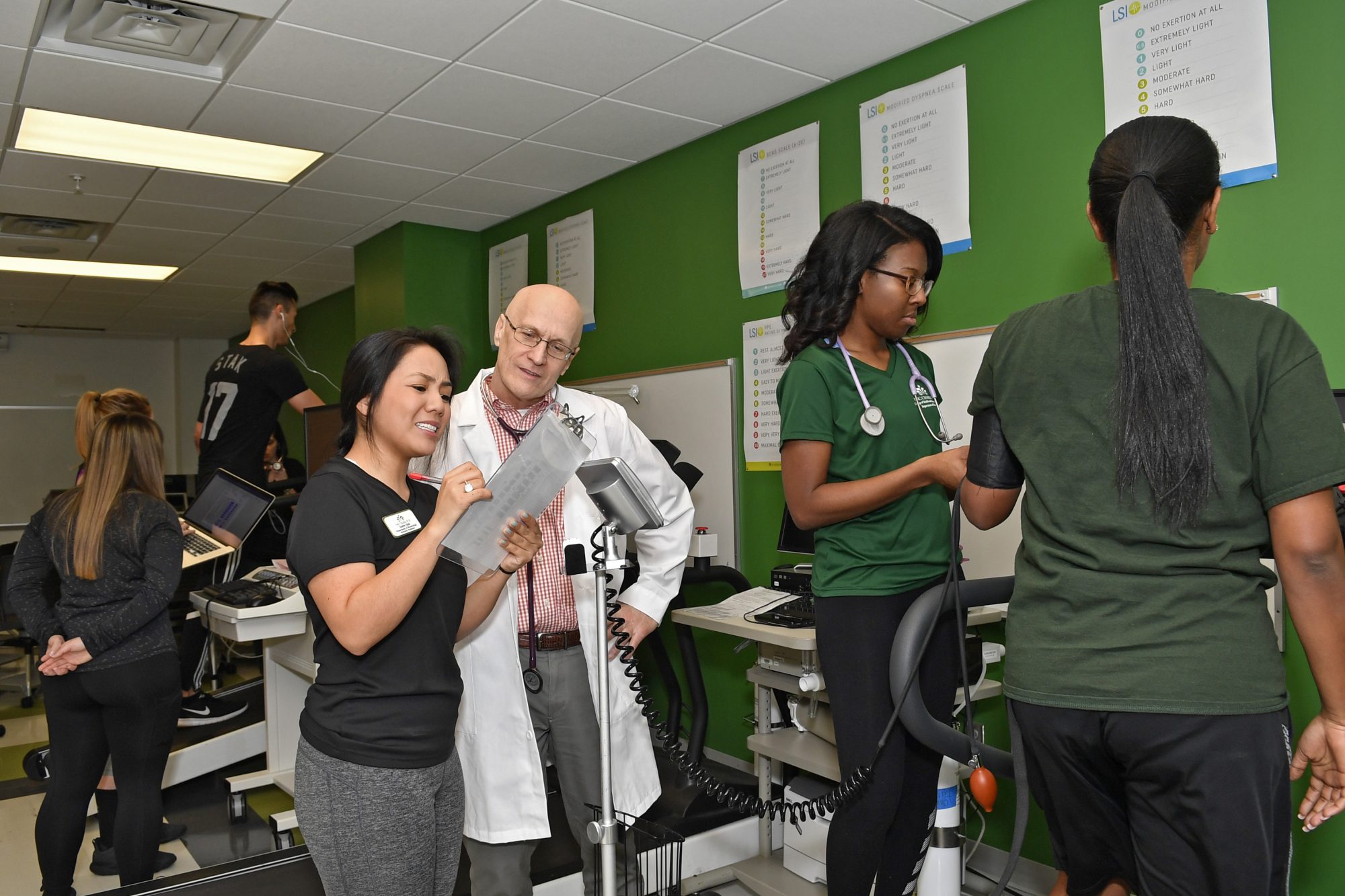Clinical Exercise Physiology Laboratory
Purpose
The mission of the Clinical Exercise Physiology Laboratory is to provide an atmosphere where students can receive hands-on training and instruction in the application of exercise principles for testing both apparently healthy and clinical populations.
Students learn to perform these tests using a variety of laboratory testing equipment. From test results, the student learns how to provide strategies to improve health and physical fitness for clients with ages that range across the lifespan. Students are also trained to work individually and as part of an interdisciplinary team in a clinical, research, community, or public health setting through laboratory exercises.
Facilities and Equipment
The laboratory occupies approximately 2500 square feet of dedicated space in the Belk Gymnasium (Lab 017). A multitude of laboratory equipment that enables teaching for large groups of undergraduate and graduate students in a supervised laboratory setting.
Equipment includes:
- Treadmills
- Cycle ergometers
- Arm ergometers
- ECG machines
- Blood pressure modalities
- Weight training devices
- Metabolic gas analysis carts

Physiologic Assessment
This laboratory is designed for teaching students how to perform physiologic assessment of the following parameters, which can be measured in both resting and exercise conditions:
- heart rate, blood pressure, and arterial oxygen saturation level
- muscular strength and endurance
- joint flexibility and range of motion
- body composition, including estimation of body fat and lean muscle tissue
- pulmonary function, including estimation of lung volumes
- metabolic gas analysis, including maximal oxygen consumption
- blood lactate and glucose levels
- electrocardiographic waveforms and abnormalities

Student Learning Objectives
Measurements taken by students during laboratory testing are used for the development of data analysis and writing assignments to test their knowledge of physiologic assessment principles. Students are required to plot metabolic data, solve metabolic equations, and answer questions that test their critical thinking abilities with each laboratory experiment. Students are taught about normal and abnormal physiologic parameters seen in both resting and exercise conditions in many patient populations. Students also learn how to operate and calibrate many pieces of laboratory equipment for optimal assessment of human physiologic responses at rest and during graded exercise.
Laboratory Director
David E. Verrill, MS, RCEP, CCEP, CCRP, FAACVPR

Laboratory Classroom Manager
Anyea King

